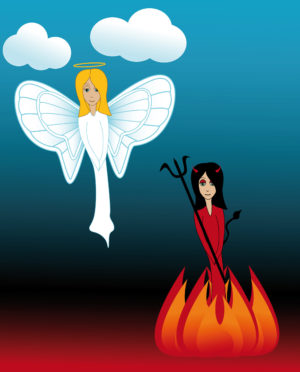Genuine tragedies in the world are not conflicts between right and wrong. They are conflicts between two rights. ~Georg Wilhelm Friedrich Hegel, 19th century German philosopher
While we like to think that the world is comprised of clear lines between good and evil, right and wrong, it is not. My opinion may differ from yours, with neither being totally right. The world just isn’t that clear and interpretive.

This issue must clearly be considered in your writing. Any sort of writing. Whether fiction or nonfiction, memoir or magazine feature, you will find yourself having to depict something as the “right” way, either through the writer’s eye or the character’s.
In fiction, or memoir since it’s written in a similar vein, the characters think they are right. The protagonist, the sidekick, the antagonist, or the guy who wanders on and off the screen, doesn’t matter who. . . think that what they say, do, or think is anchored in some sort of truth. Of course we cannot begin to know all sides of issues in our own lives, so our characters most assuredly do not have all the facts. . . or options. That is how conflict happens. That is how good stories are told.
In nonfiction or magazine feature, the words are expressed with the writer feeling informed about the message when in reality, they are not. Instead they are depicting their take, their research, and their experience, with the goal of establishing it as fact.
People love feeling confident. And when you instill that confidence in your writing, the reader latches on. And when you make your character cling to what they believe, right or wrong, good or evil, the character becomes incredibly human.
After all, all of us, friends, relatives, peers, and yes, our characters, love the feeling of being right.
(Graphic courtesy of 3767973 © Chrystie Hile | Dreamstime.com )
Leave a Reply